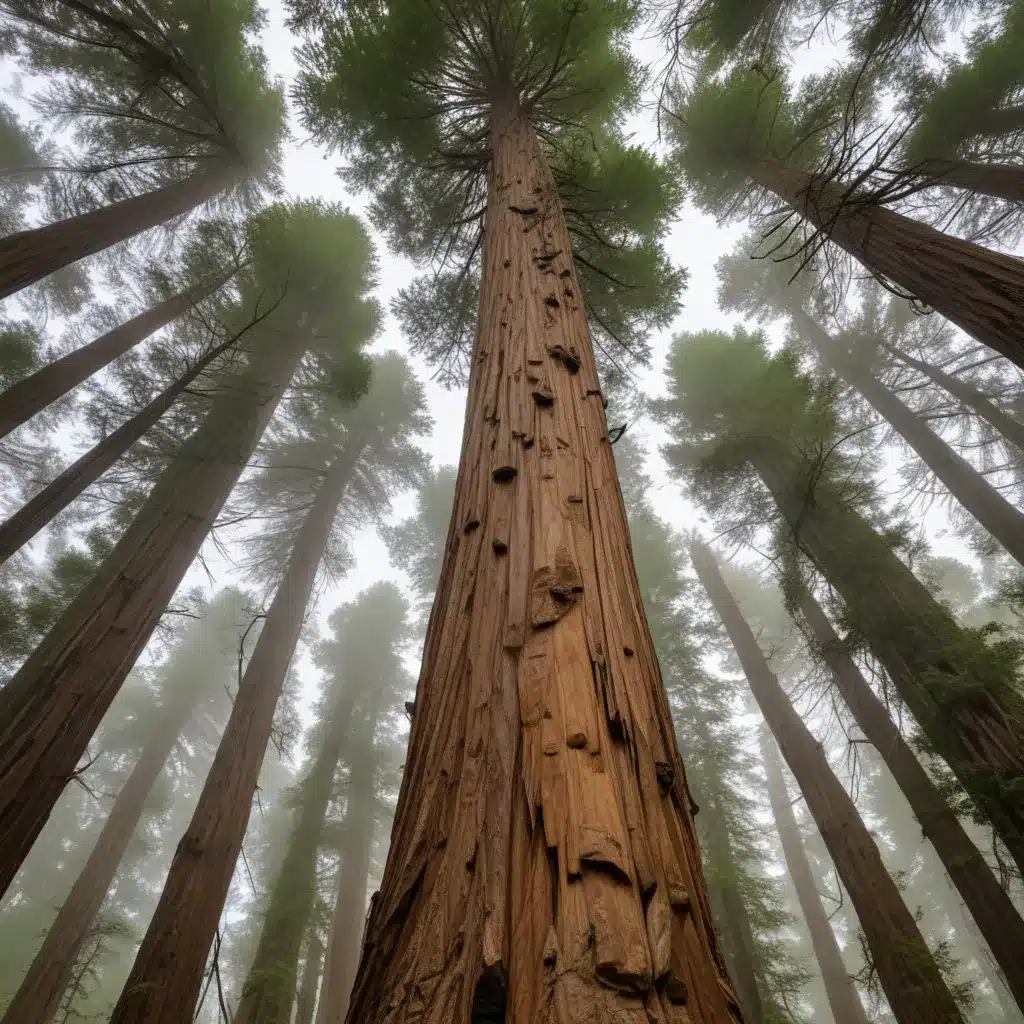
The Sequoia sempervirens, more commonly known as the redwood, is a truly remarkable tree species. These majestic giants, native to the coastal regions of California and Oregon, have captivated the human imagination for centuries. Their sheer size, longevity, and ecological significance make them an enduring symbol of nature’s grandeur. As tree care specialists at TriCounty Tree Care, we’re honored to delve into the secrets of this towering wonder and share our insights.
Redwood Tree Characteristics
The redwood is a true marvel of the plant kingdom. These trees can reach staggering heights, with some individuals exceeding 300 feet (90 meters) in height. Their massive, columnar trunks can measure up to 30 feet (9 meters) in diameter, dwarfing even the most seasoned of hikers. The bark of the redwood is fibrous and reddish-brown, providing an insulating layer that protects the tree from fire and disease.
The foliage of the redwood is characterized by small, flat, needle-like leaves that are a deep, lustrous green. These leaves are arranged in a spiraling pattern along the branches, maximizing the tree’s surface area for photosynthesis. The cones of the redwood are small, spherical, and woody, containing the tree’s precious seeds.
One of the most remarkable traits of the redwood is its longevity. These trees can live for thousands of years, with some individuals estimated to be over 2,000 years old. This longevity is made possible by the redwood’s remarkable ability to regenerate from its burls – woody, knobby growths at the base of the trunk. These burls contain dormant buds that can sprout new trunks, allowing the tree to essentially clone itself and continue its existence indefinitely.
The redwood’s growth rate is also noteworthy, with some trees adding over 100 feet (30 meters) of height in their lifetime. This rapid growth is facilitated by the tree’s deep, extensive root system, which can spread hundreds of feet from the trunk, anchoring the tree firmly in the soil and providing access to abundant water and nutrients.
Redwood Ecosystem
The redwood forest is a unique and vibrant ecosystem, home to a diverse array of flora and fauna. These towering trees provide a canopy that filters sunlight, creating a cool, moist environment that supports a rich understory of ferns, mosses, and smaller plants. The fallen needles and bark of the redwood trees enrich the soil, creating a nutrient-dense substrate for the entire ecosystem.
The redwood forest is a biodiversity hotspot, providing habitat for a variety of wildlife species. Mammals such as the black bear, mountain lion, and Roosevelt elk thrive in the redwood’s sheltering embrace. Birds, including the iconic northern spotted owl, nest in the tree’s branches and feed on the abundant insects and small animals that call the redwood forest home.
The redwood’s role in carbon sequestration is equally remarkable. As these massive trees grow, they absorb and store vast amounts of atmospheric carbon dioxide, making them a critical component in the fight against climate change. In fact, redwood forests are estimated to be able to store up to 3,000 metric tons of carbon per acre, making them one of the most effective natural carbon sinks on the planet.
Redwood Forest Ecology
The redwood forest is a complex and dynamic ecosystem, with a distinct structure and composition. The tallest trees form the overstory, casting shade upon the smaller, younger trees and shrubs that make up the understory. This layered arrangement creates a diverse array of microclimates and niches, supporting a rich tapestry of plant and animal life.
The regeneration of the redwood forest is a fascinating process. When a mature tree falls, its burl may sprout new trunks, creating a clonal colony that can persist for millennia. Additionally, the redwood’s fire-resistant bark and ability to resprout from its roots allow it to recover from even the most intense blazes, making it a resilient species in the face of natural disturbances.
Maintaining the health and conservation of the redwood forest is of paramount importance. TriCounty Tree Care, for example, works closely with local and state agencies to implement sustainable forestry practices, protect old-growth stands, and educate the public on the ecological significance of these remarkable trees. By understanding the delicate balance of the redwood ecosystem, we can ensure that these towering giants continue to thrive for generations to come.
Redwood Cultural Significance
The redwood has long held a prominent place in the cultural traditions and beliefs of the indigenous peoples who have inhabited the coastal regions of California and Oregon. For many Native American tribes, the redwood is a sacred, revered tree, imbued with spiritual significance and deeply intertwined with their way of life.
These towering trees have also captured the imagination of the broader public, becoming a symbol of recreational and aesthetic value. The redwood forests draw millions of visitors each year, who come to marvel at their grandeur, hike their trails, and immerse themselves in the tranquility of these ancient, living giants.
Beyond their recreational appeal, redwoods also hold economic importance. The wood of the redwood is highly valued for its durability, resistance to rot, and aesthetic appeal, making it a prized material for construction, furniture, and other wood products. The redwood industry, when managed sustainably, provides jobs and economic opportunities for local communities.
As we delve into the secrets of the redwood, we are reminded of the vital role these trees play in our world – as ecological powerhouses, cultural touchstones, and economic resources. By understanding and preserving the redwood, we not only safeguard a natural wonder but also protect the delicate balance of the entire ecosystem that it sustains. To learn more about the redwood and how you can support its conservation, visit TriCounty Tree Care today.


